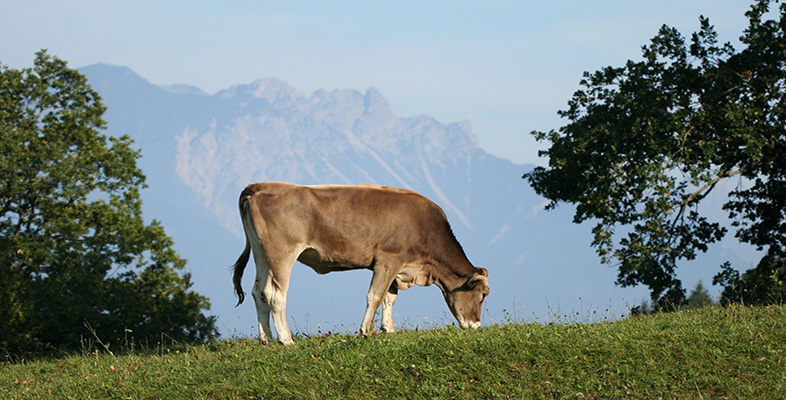2 The herbivore lifestyle - living on leaves
Leaves are a much less nutritious food than most kinds of animal material, so large herbivores have to eat large quantities of plants and they have special ways to digest their food. As author David Attenborough (DA) says, 'Leaves are extremely poor food' [p. 89]. To find out why living on a diet of leaves is particularly difficult, we need to know something about how leaves work.
Figure 1 shows a vertical section through a leaf, revealing the arrangement of the cells inside. Rather than providing a scale bar, here you will calculate the magnification and the size of the cells yourself. Since cells are very small, we need to use some very small SI units of length. The basic SI unit of length is the metre (m). One hundred times smaller than this is the centimetre (cm), and ten times smaller than that is the millimetre (mm). One thousand times smaller than that is the micrometre (μm, pronounced 'mew-em'). Cell dimensions are typically measured in μm.

Plants, unlike animals, can make their own food. The process by which they do so is called photosynthesis; 'photo' means light and 'synthesis' means building up. Plants harness sunlight as their energy source for the process that combines water (taken up through their roots) and carbon dioxide (taken in from the air through pores, called stomata, in their leaves) to make sugars.
Plants can use these sugars, together with minerals which are dissolved in the water in the soil, as the raw materials for all the other types of molecule that the plant needs for its healthy growth. A crucial role in photosynthesis is played by the green pigment, chlorophyll, which is located in tiny structures called chloroplasts, inside the cells of the leaf.
Activity 1
Watch the TV programme from 00.30-05.00, which includes sequences of the largest plant predator, the elephant, and one of the most unusual ones, the sloth, and then provides a look inside a leaf. It would be useful to make notes to help you identify the main problems that herbivores face. What does DA say is the main challenge of a green diet?
Answer
The main challenge is breaking the 'mesh of cellulose walls' which surrounds each plant cell, protecting the contents inside.
SAQ 1
Look at Figure 1, which shows how the cells are arranged inside a leaf. If in real life this leaf is only 1 mm thick, how many times is the leaf magnified in this diagram? How tall would one of the palisade cells actually be?
Answer
The leaf in Figure 1 is about 70 mm thick in the diagram, so it is magnified 70 times. One of the palisade cells is about 15 mm long in the diagram, so its actual size would be 15/70 mm or just over 1/5 mm. You can also express this as just over 0.2 mm or 200 μm (there are 1000 micrometres, μm, in a millimetre).
Each cell in the leaf is surrounded by a wall of cellulose. Chemically, cellulose is made up of strings of sugar molecules, joined together as threads, like strings of minute beads; these threads are criss-crossed to make a strong lattice around each cell. How can herbivores get access to the potential nutrients around and within the plant cells? Initially, plant material is subject to physical breakdown, grinding it up into small paricles using specially adapted teeth. This phase is followed by chemical breakdown of the cellulose lattice, to release the sugar molecules and allow access to the nutrients within the plant cells.
